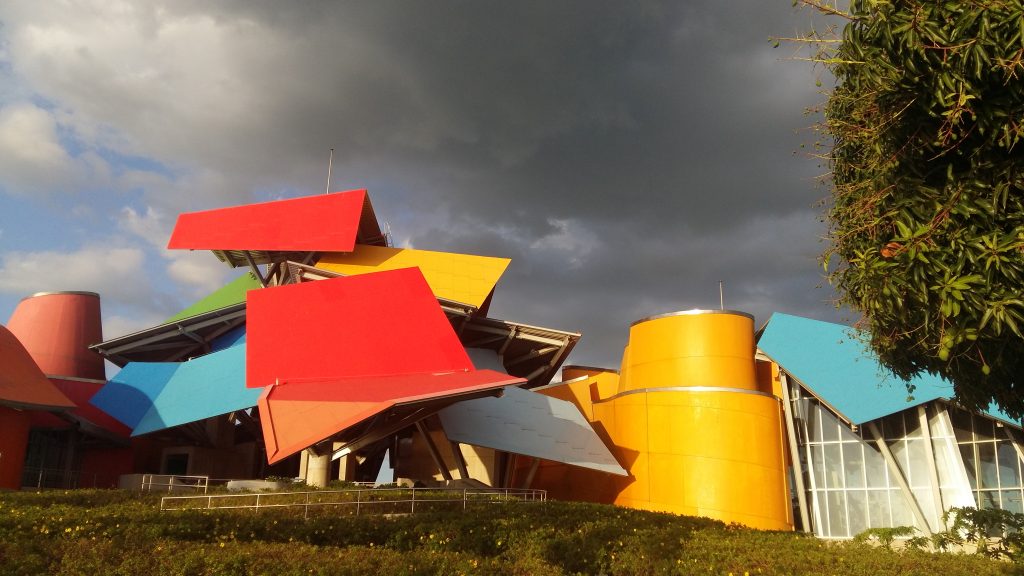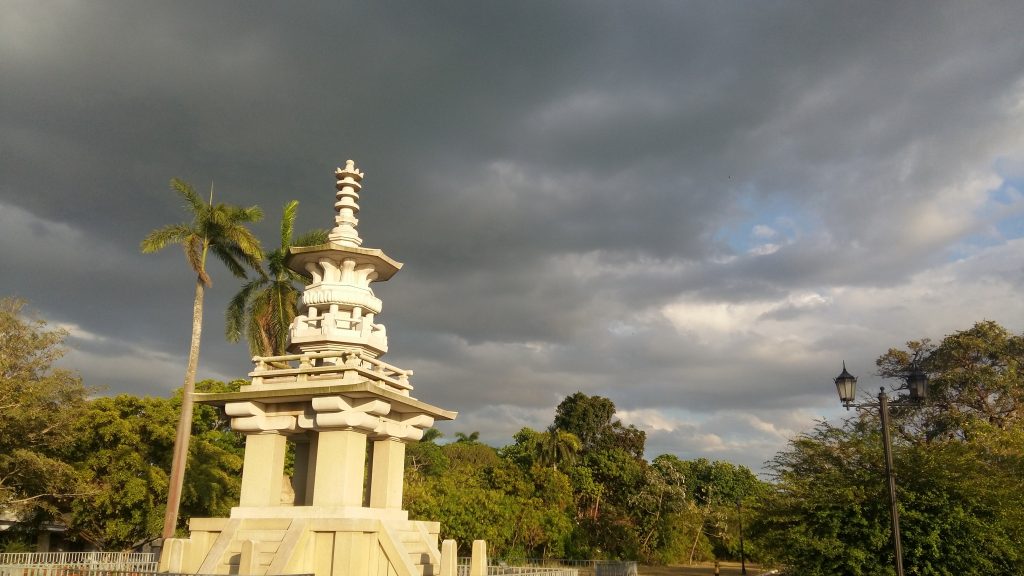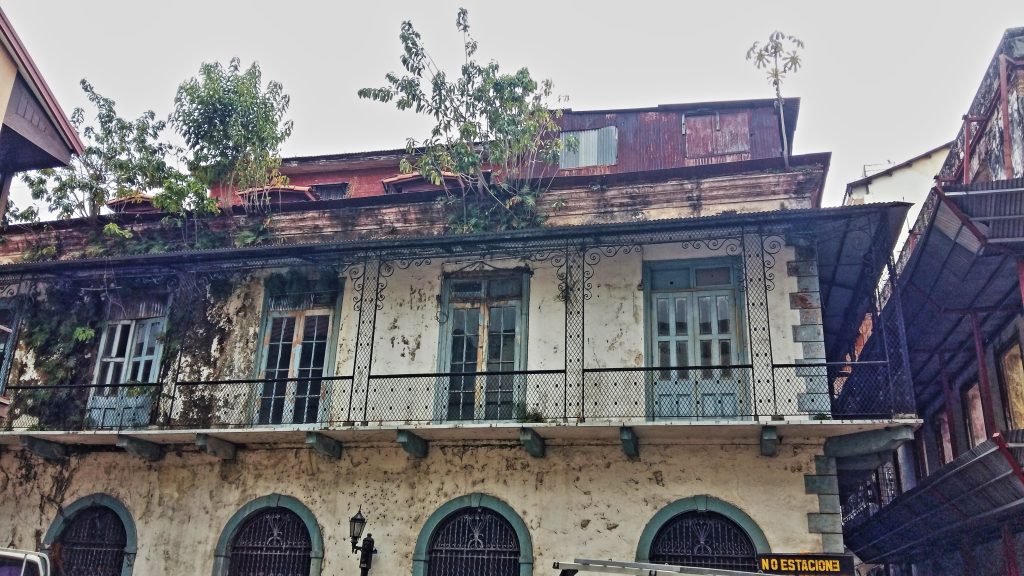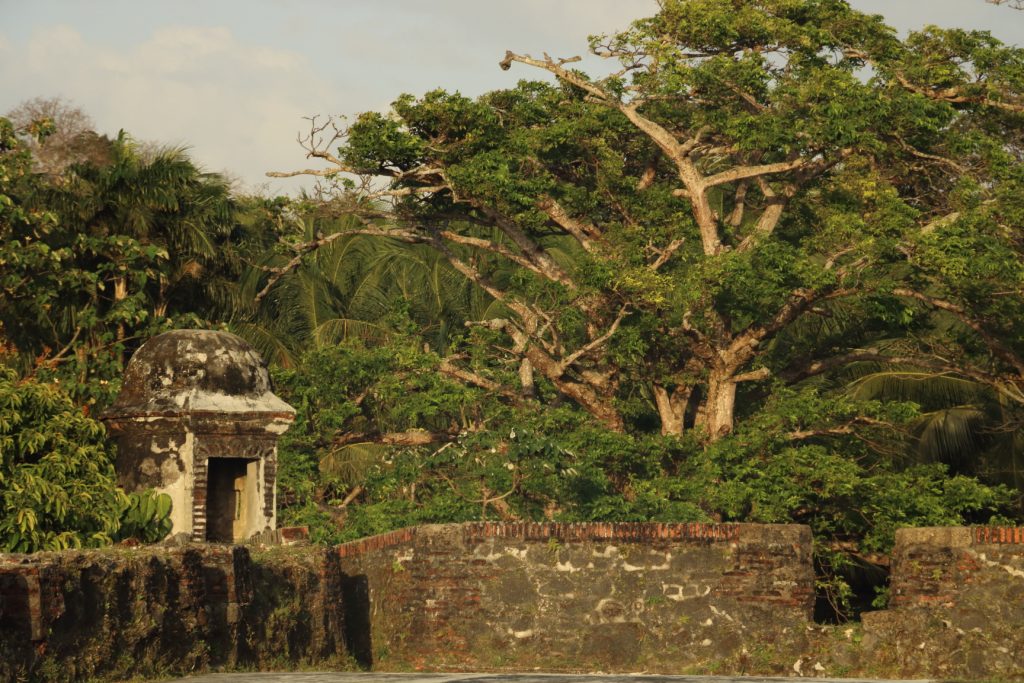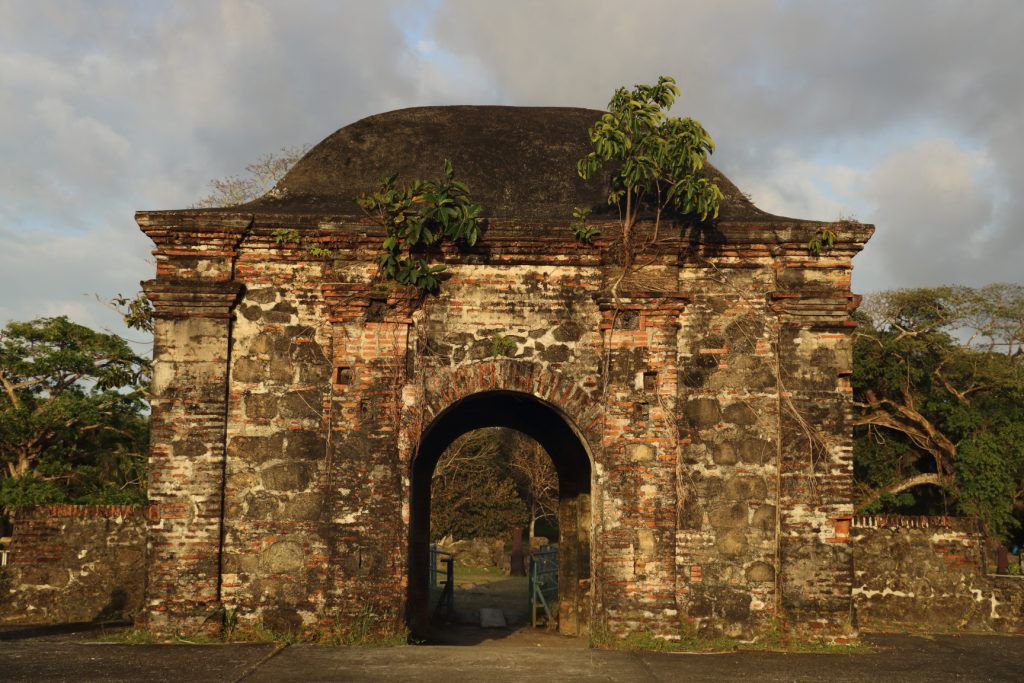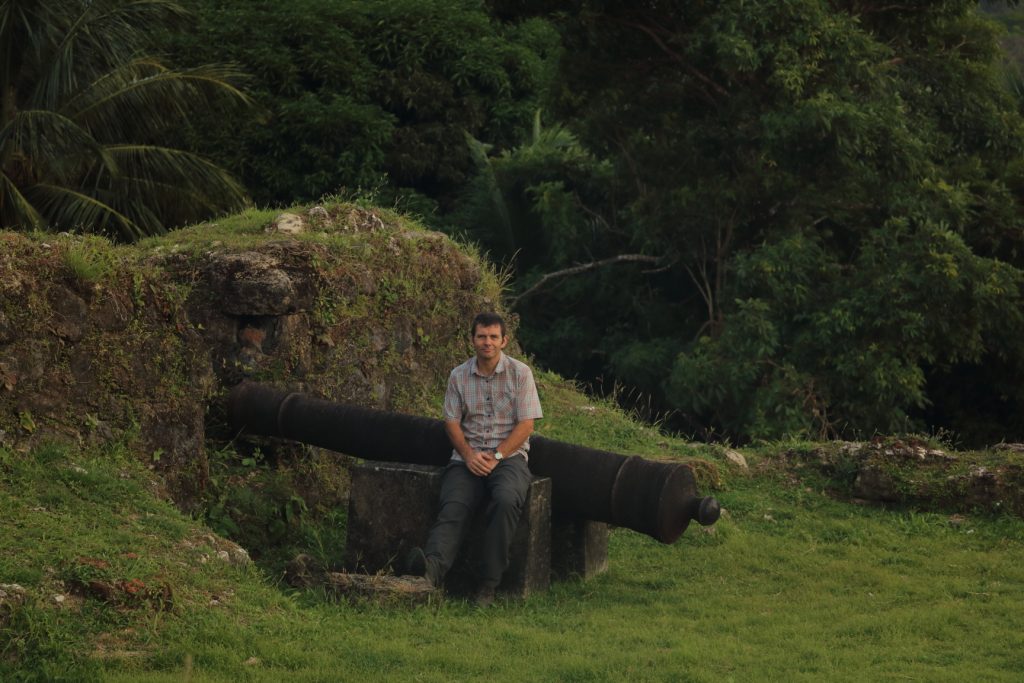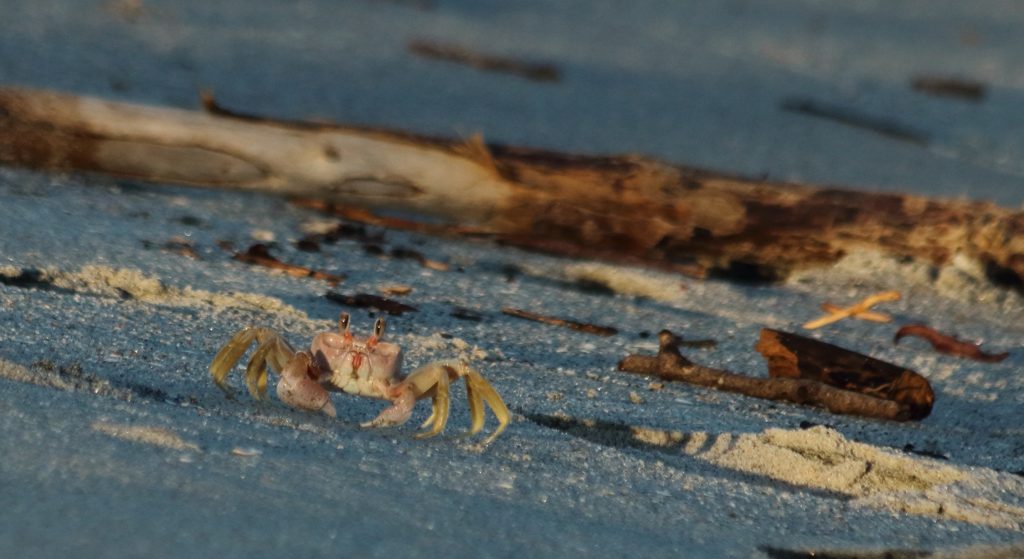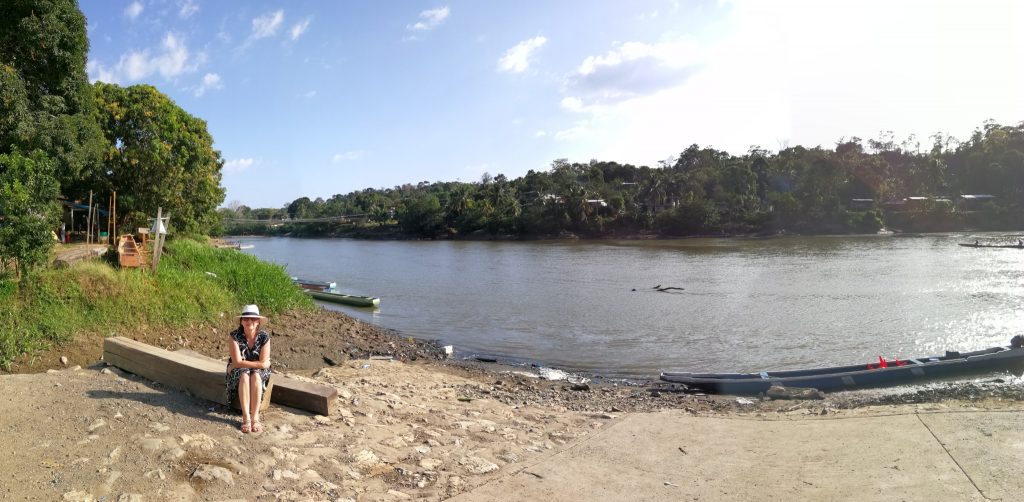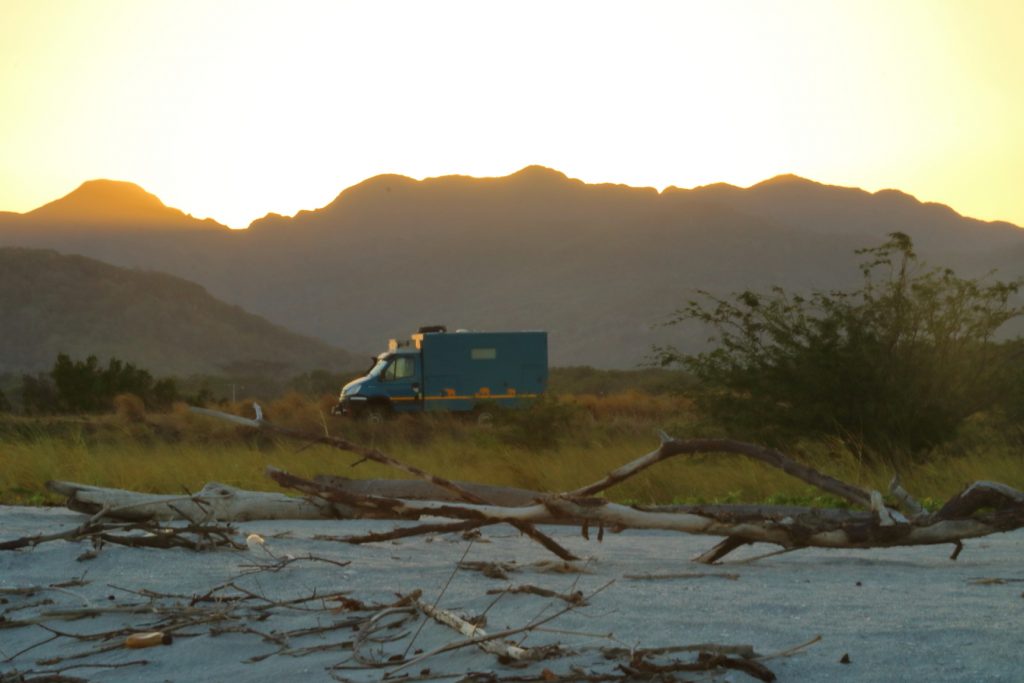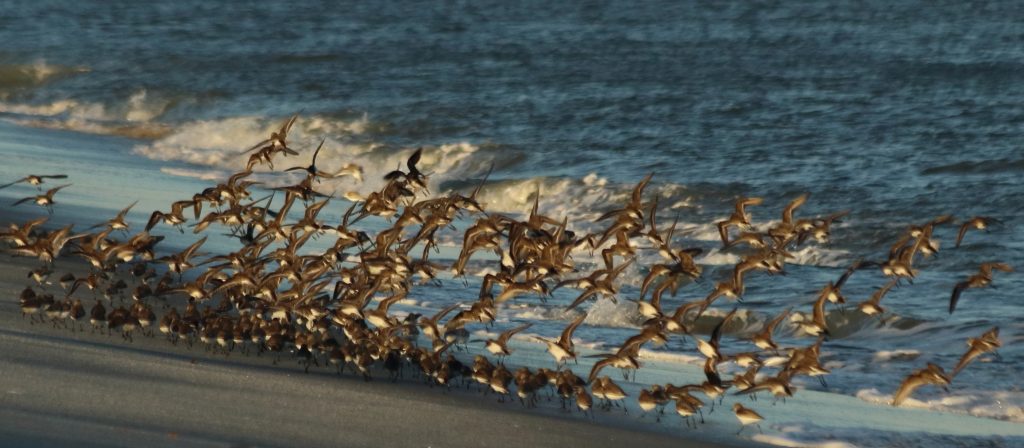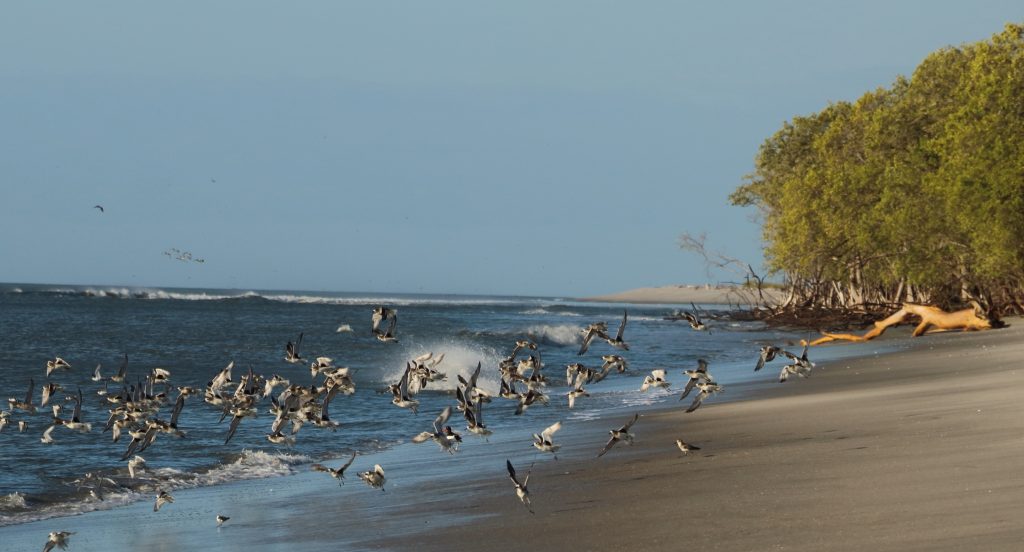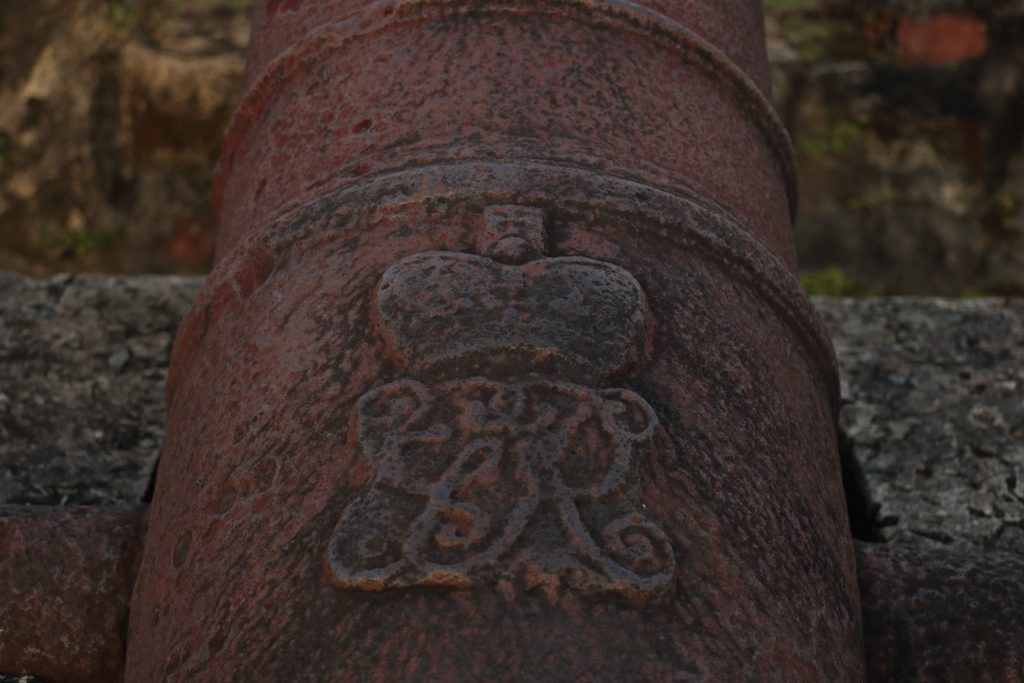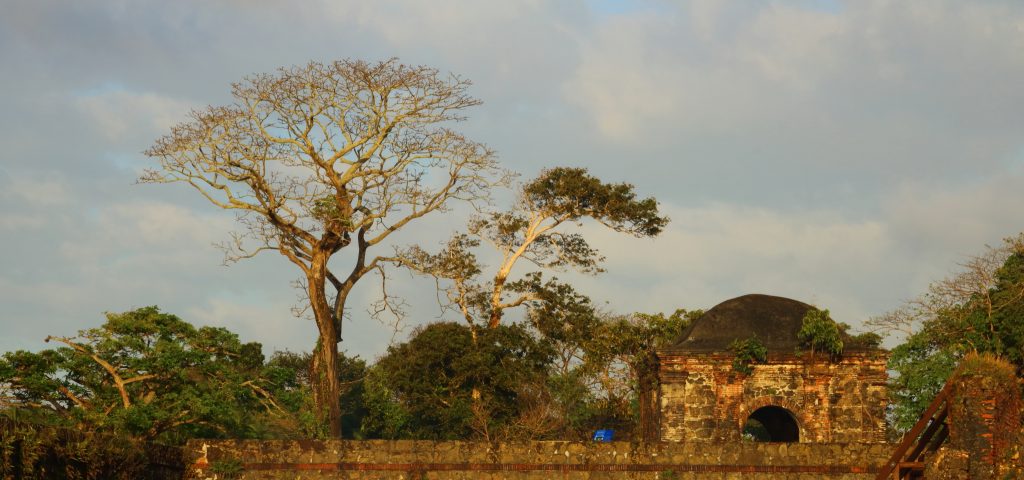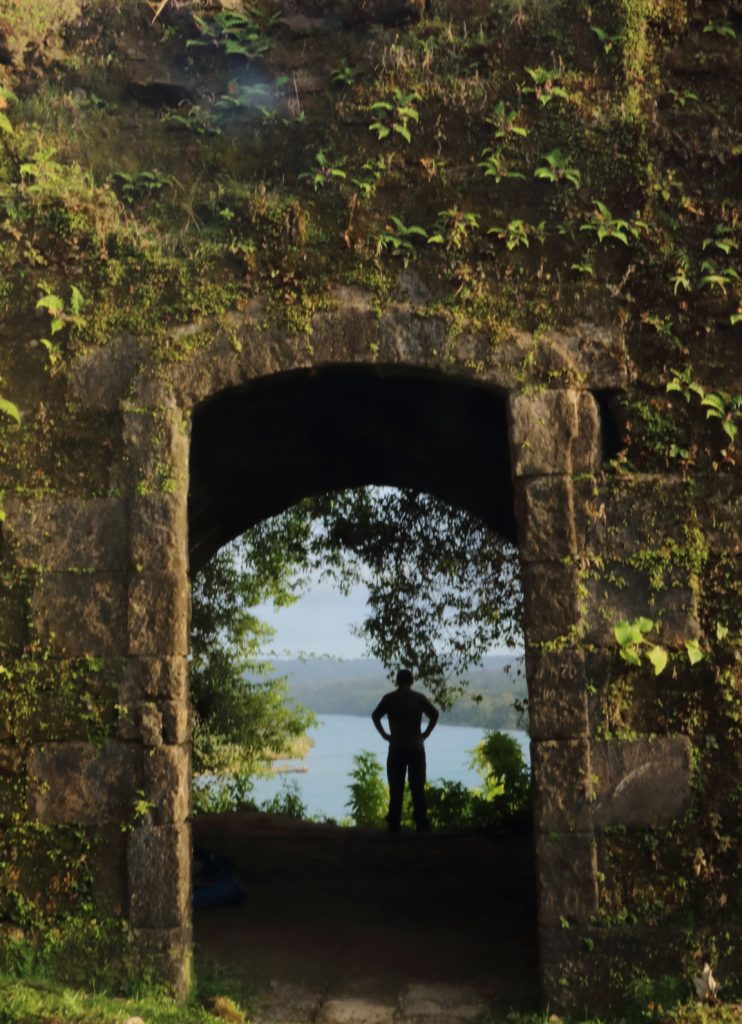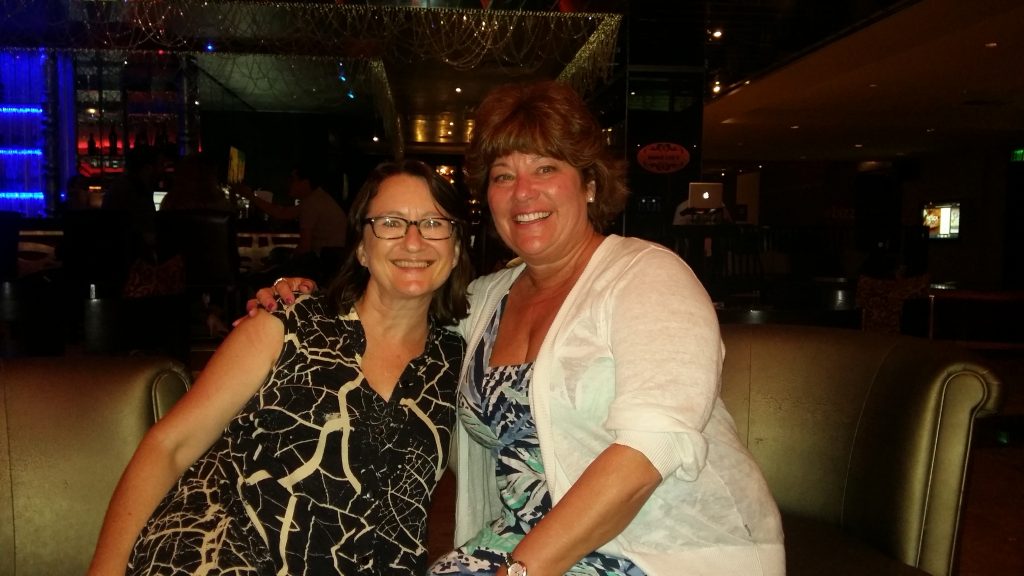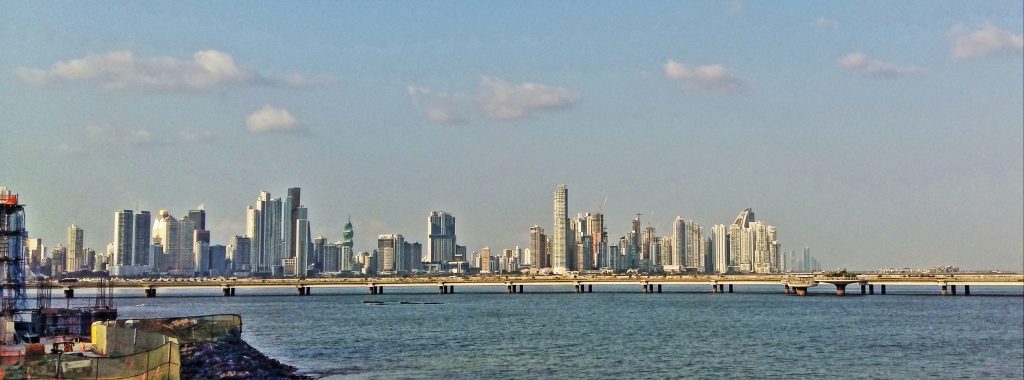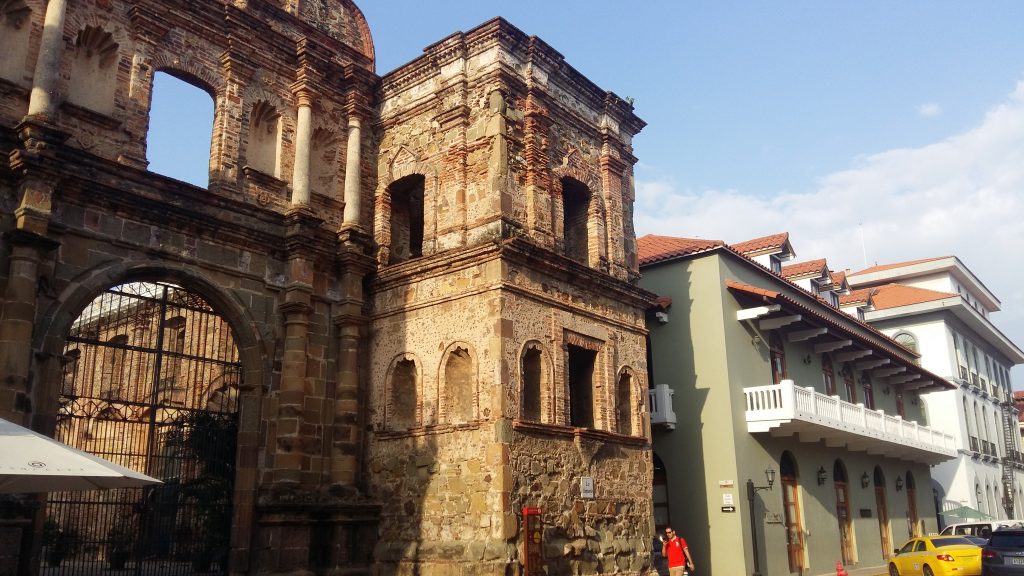It’s a big hop from South to Central America. From Colombia, our Cuthbert took a luxury Caribbean RORO cruise and we took a flight into Panama. Once we had Cuthbert released from Customs, we set out to explore eastern Panama, Panama City, and one of our bucket-list destinations: the Canal. As Panama City is a glitzy, first-world, cosmopolitan city, we also took the opportunity to sort out some over-due dental work. What we hadn’t anticipated, is quite how long the dentist would keep us here!Around the Darien Gap.

Cuthbert with a London Taxi in Panama!
Hopping the Darien Gap
The sharp of eye may have noticed above that our arrival in Panama involved shipping and a flight. But South and Central America are connected by land, aren’t they? Why not drive? The clue lies in the name of that little isthmus of land between the continents. It’s called ‘The Darien Gap’. And it is indeed a gap! There is a 150km gap between the end of the PanAmerican highway in Colombia and the end of the PanAmerican highway in Panama. There are no roads through, not even rough dirt-tracks. It is amongst the densest, most impenetrable jungle-swamp on the planet. Local indigenous people navigate the myriad of narrow waterways by canoe and a few drugs gangs use these as smuggling routes, but generally speaking it’s a bit of a show-stopper for the casual overlander.
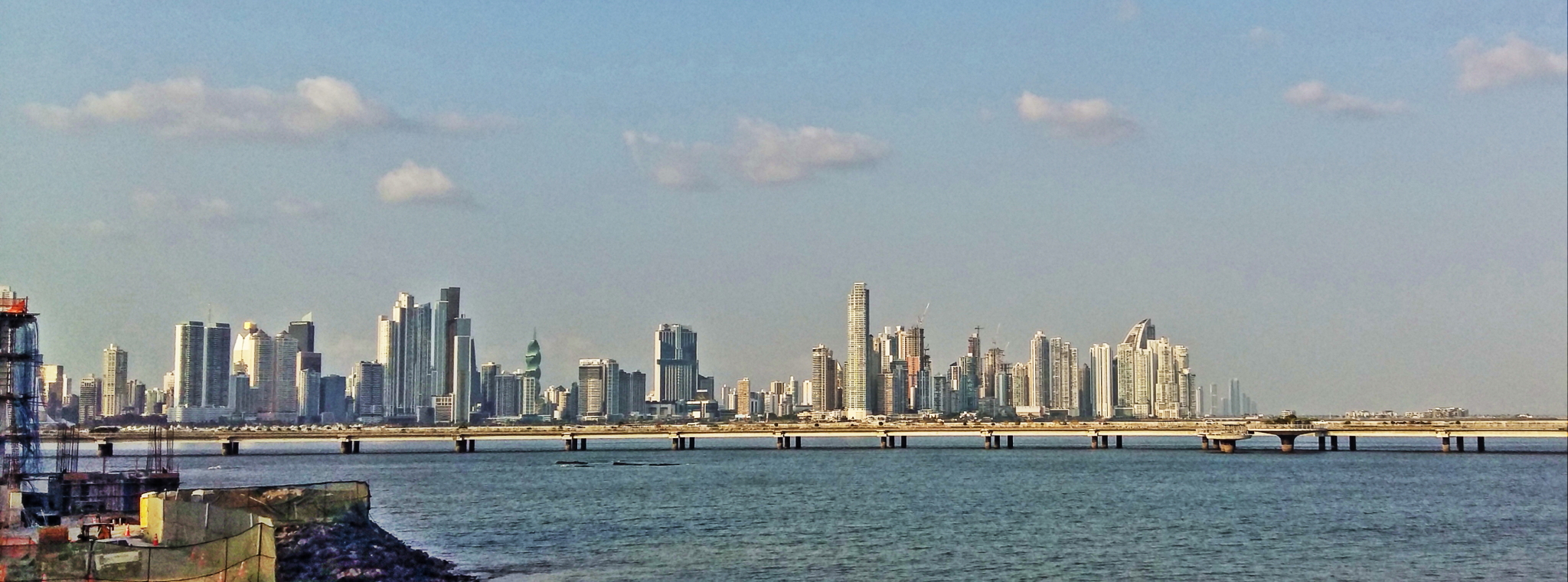
Panama City skyline
The great frustration with this short distance is that there is no car ferry or easy way to get a vehicle around The Gap. The only way is to hand your vehicle over to a global shipping line for transporting. The shipping lines are naturally aware of the commercial clout they wield over the ‘little traveller’ and consequently charge exorbitant rates ☹. Add to said exorbitant shipping rate, the cost of port fees, shipping agents, flights, hotels, taxis blahdy-blahdy-blah… and the whole thing becomes a rather pricey little gap to cross. Whatever… you either go, or you don’t.
The transfer between continents went smoothly for both us and for Cuthbert. One marvellous thing to come out of the trip was making our new friends, Stacy and Josette. Stacy is the manager of Cuthbert’s arrival port, Colon and he noticed our Cuthbert in the compound. Interested in our travels, he contacted us and very kindly invited us to dinner with his lovely family. We had a marvellous time with them and are most grateful for both their generous hospitality and all the helpful local information they gave us.
A very good place to start
A major highlight for us arriving in Panama was to see the Canal. The first thing we did after leaving the port in Cuthbert was drive to the Agua Clara Visitor Centre near Colon, overlooking the east-end locks. It was amazing to see one of our bucket-list destinations in operation, but nowhere near as amazing as the opportunity to actually sail through the canal on a beautiful yacht. We were thrilled that David and Chis agreed to take us as crew through the Canal on their s/v Platina (full story here).
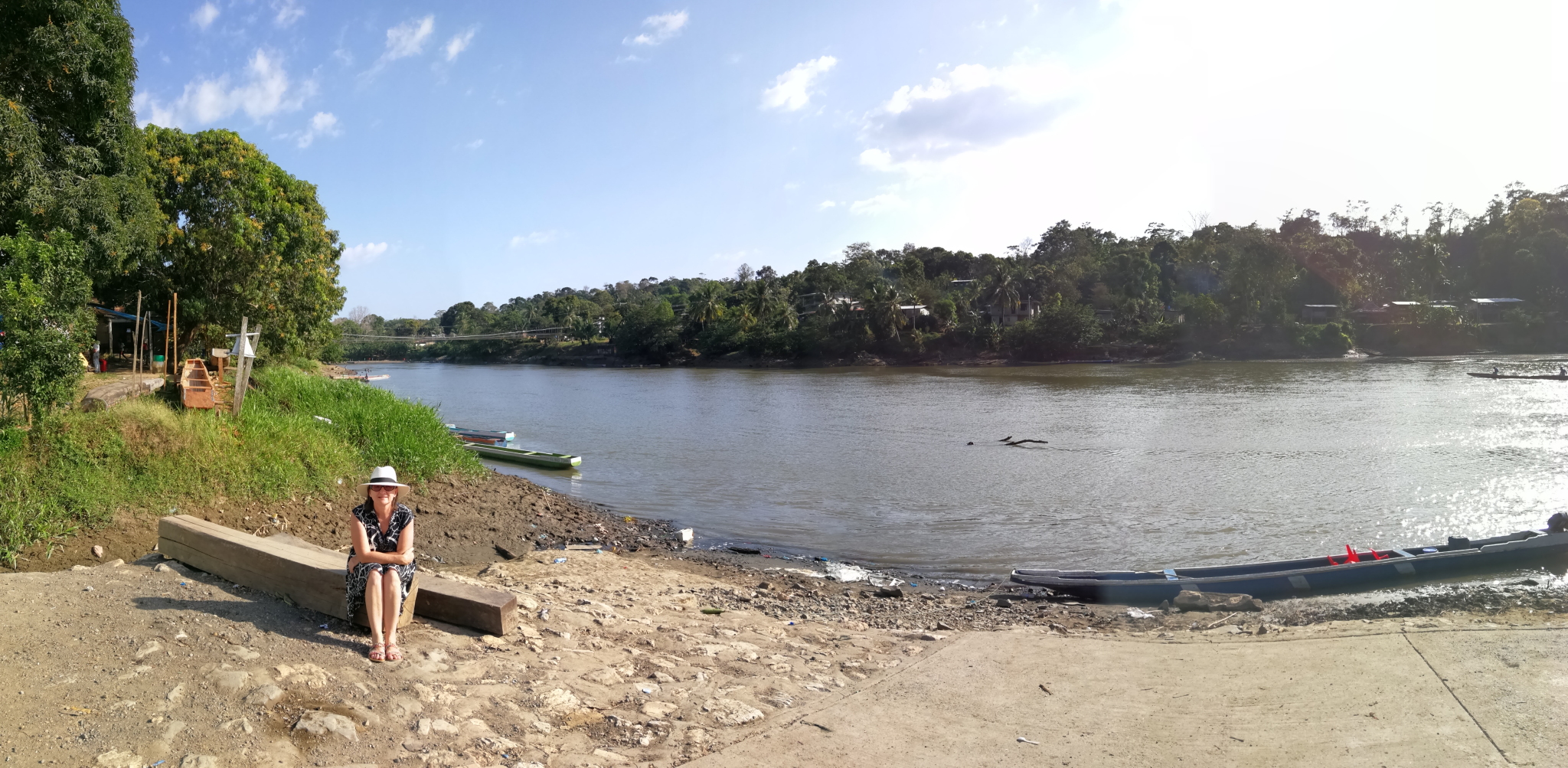
The Darien Gap starts here
Whilst we were waiting for the sailing plans to come together, we thought we’d go and have a look at this Darien Gap thing that had caused us so much expense. What does the end of the Central American PanAm highway actually look like? If we’re going to head all the way to Alaska on this highway, we may as well start at the beginning. As Julie Andrews once famously advised: “Let’s start at the very beginning… a very good place to start” 😊
The PanAm highway of Central America ends some 285 km east of Panama City at the small town of Yaviza. It’s not the most exciting drive to get there, but it’s a reasonable road. Once in Darién Province, there are military and police checkpoints along the road and reaching Yaviza does feel a bit like the ‘end of the world’. The main highway narrows into a small, dull, nondescript main street that is too tight for Cuthbert. We wander down the street on foot past the locals sitting around on kerbs and in street-side gambling bars, drinking a playing loud music.

The footbridge at the end of the road
Yaviza doesn’t have the feel of a busy, prosperous town. It’s not particularly attractive and not the kind of place we would ordinarily even stop and get out of Cuthbert. There was a fairly heavy military and police presence around the town, but it didn’t feel unsafe. The great PanAmerican highway, that has wound its way from the Alaskan Arctic, through Canada, USA, Mexico and Central America, is finally interrupted, at the end of Yaviza main street by a long, bouncy suspension foot-bridge over the river. For the determined or the stupid (you decide which 😊) it is from here a 150km jungle/swamp trek to the continuation of the PanAm highway in South America. It’s certainly not a great idea to attempt to continue south from here, but if you’re heading north to Alaska it is at least a very good place to start.
Residential lifestyle
Oddly for us, in Panama City we get into a bit of a residential lifestyle. We found a great place to park-up by the waterside near Balboa yacht club. It’s by a park, peaceful and free! From our window we can watch the ships entering the Canal, the city is nearby, there is a promenade for walks along the waterfront and best of all, a nice bar/restaurant in the yacht club. What more could we want?! We spent weekdays in the city for dental treatment, sight-seeing, shopping and socialising. We also had a bit of admin to extend Cuthbert’s temporary import permit (TIP). Inexplicably, on arrival Panama issues personal visas for 90 days but TIPs for only 30 days, but it’s an easy enough process to extend.
- BioScience Museum, Amador
- Memorial to Chinese Canal workers
- Panama City – still a bit of work to do restoring the old town
Our new friends, the yachtsmen David and Chis are moored-up here doing their pre-Pacific departure prep, so it was great to catch up with them regularly. An unexpected treat was a lovely evening out with my friend and colleague from our Doha days, Donna and her husband Scott. They’re visiting Panama briefly on a business trip – happy coincidence!
Some of the weekends we went out to the beach at the Chame peninsula some 50km west of the city. There’s a great park-up spot by a long, beautiful beach. It was always deserted save for the pelicans skimming the waves and Marcus took some very cool drone video.
Rains and fans
One of our concerns with delaying so long here in Panama City is that the Central American rainy season is on its way in. Generally speaking, the rainy season isn’t said to be the very best time of year to be exploring the Costa Rican rain-forests. As the rains creep up on us, we are essentially ‘wasting’ the last weeks of the dry season, sat in a city. Don’t get me wrong, it is a very nice city, but it’s not the Costa Rican jungle (#justabitfrustating).
This time last year we were just delving into the Amazon jungle of north-eastern Brazil and French Guiana. The Amazonian tropical rainy season was an event for which, we must with hind-sight admit, we were rather unprepared. Before that, in Africa we had managed to avoid the worst of the tropical rainy seasons, so we had yet to experience camper-truck life in the combined unpleasantness of heat and extreme humidity. In north Brazil we realised for the first time that we lacked the ability to properly ventilate Cuthbert during heavy rains.
- Fort San Lorenzo
- Fort San Lorenzo
- Fort San Lorenzo
Cuthbert has the ideal set-up for temperate climates or for hot/dry climates. He has a large roof-hatch to open on warm days/nights and a separate roof fan-vent to suck/blow air in/out as required to keep fresh air moving around inside the truck. Even on the hottest nights in a dry climate, this has been sufficient to keep us cool and ensure a good night’s sleep.
The problem in the rains, is that we can open neither of these roof vents (well… we could… but we’d get very wet 😊). With temperatures over 40C and humidity around 95%, the atmosphere inside Cuthbert is stifling. What we want… what we really, really want… is one of those rain-proof roof-fan things. You know… the ones with an integral rain hood, so the roof-fan can keep running even when it’s chucking down cats and dogs.
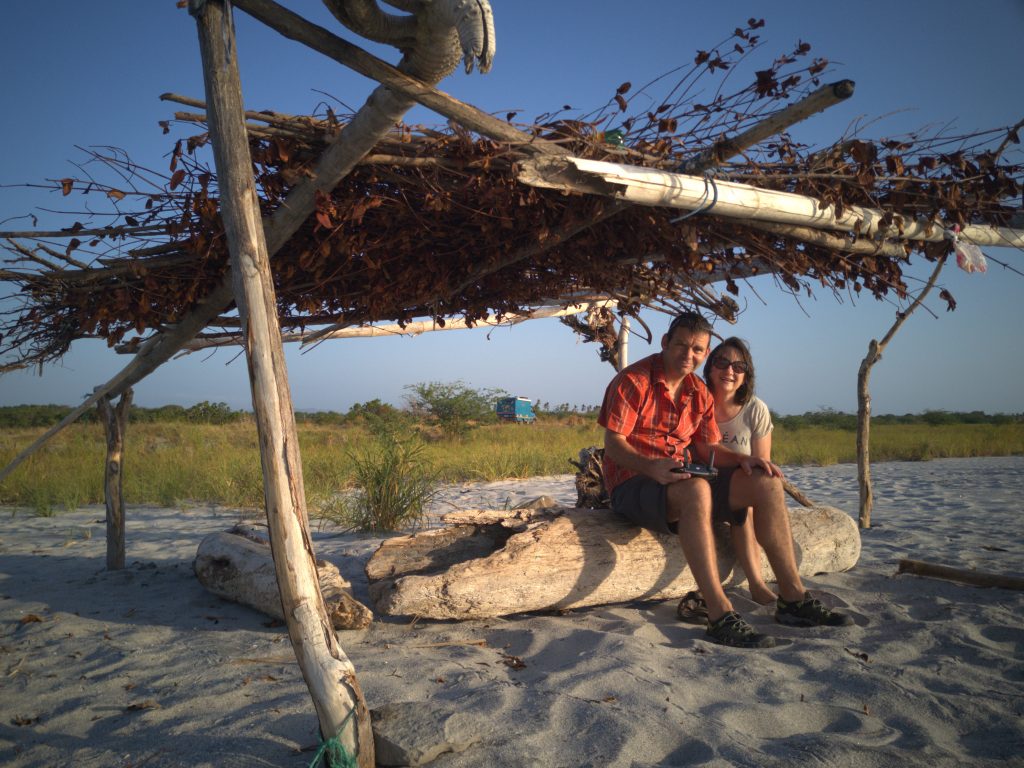
Our weekend beach getaway from the city
As we’re here in town for a while, we decide to order one of said new roof fans from the USA and have it shipped in (thanks to Stacy for helping arrange for us to receive this). Fitting the new fan turned out to be a slightly bigger challenge than expected (full techie story here) but with a bit of improvisation… voila! Le new rain-proof roof fan is installed. And wouldn’t you know it… just as the fresh sealant was drying around the edge of the new fan, the first rains we had seen in weeks started to fall! Spooky, huh??
Anyway… finally… with the new fan fitted, over seven weeks after arriving in Panama City… the dental treatment is all done (we’ll spare you the gory details of root canal treatment and jaw-bone grafts 🙁 ) and we can hit the road again. We’re looking forward to exploring western Panama and heading on to the Costa Rican jungle, before those rains hit us big-time!
Eastern Panama Gallery
- Our weekend beach getaway from the city
- Fort San Lorenzo
- Chame Beach
- BioScience Museum, Amador
- Fort San Lorenzo
- The Darien Gap starts here
- The bridge at the end of the road
- Chame Beach
- Chame Beach
- Chame Beach
- Fort San Lorenzo
- Memorial to Chinese Canal workers
- Fort San Lorenzo
- Fort San Lorenzo
- Fort San Lorenzo
- Chame Beach
- Catching up with the lovely Donna
- Panama City skyline
- Panama City – the old and the new
- Panama City – still a bit of work to do restoring the old town

